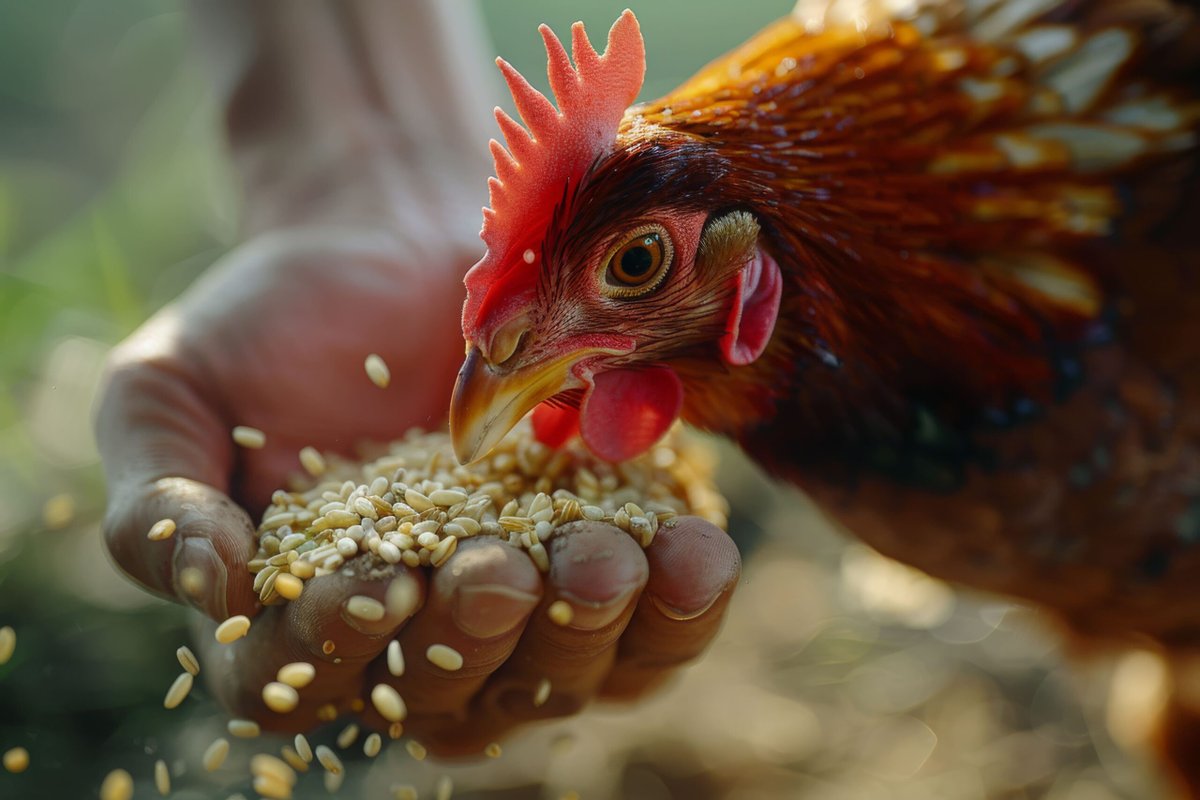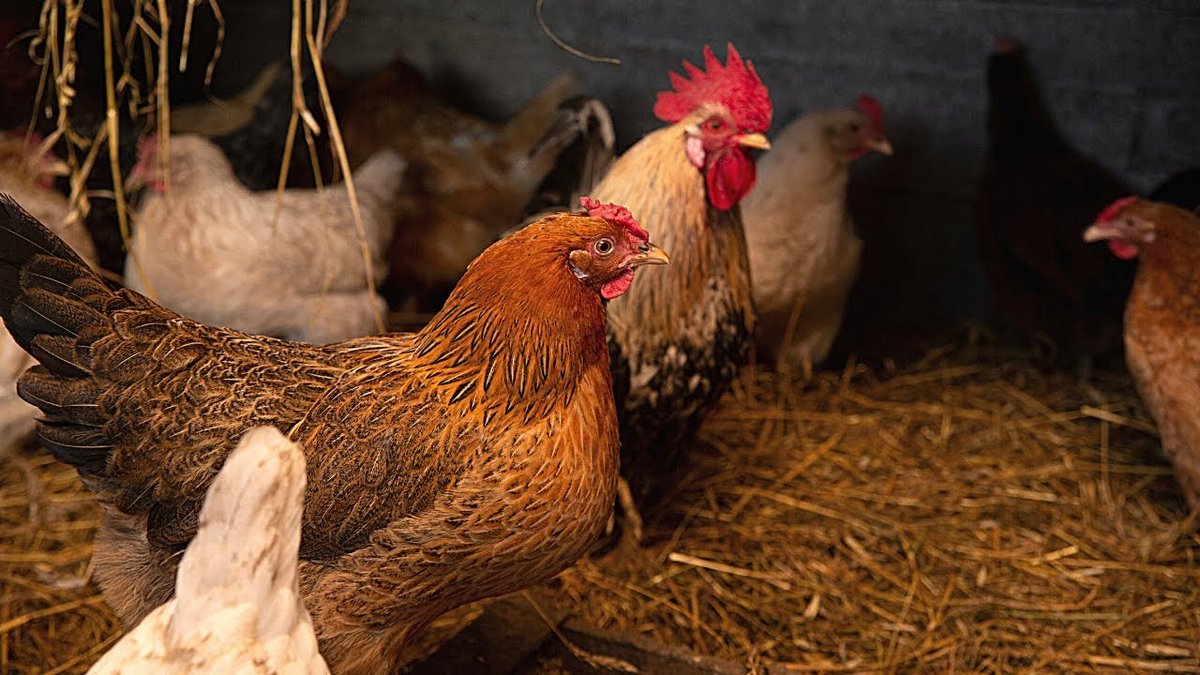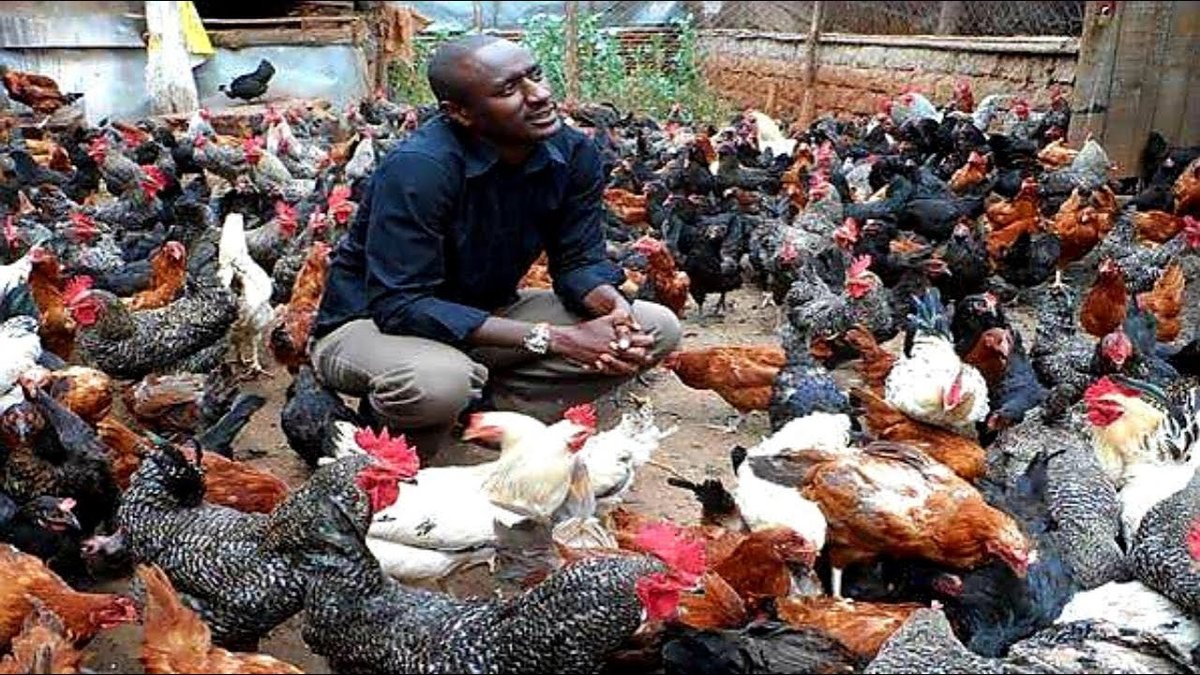Picture this: You’re standing at the crossroads of your poultry farming journey, a piece of land ready, your passion ignited, but one crucial question is stopping you dead in your tracks—which chicken should you raise? This isn’t just a simple choice; it’s the foundation upon which your entire business will be built. With Nigeria’s poultry market valued at a staggering $4.2 billion and projected to grow, choosing the right bird—Layers, Broilers, or Noilers—is the single most important decision that will determine your success or failure. This poultry farming decision guide Nigeria is designed to give you all the information you need.
Are you looking for the steady, monthly income of an egg business? The quick, high-volume cash flow of meat production? Or a resilient, dual-purpose bird that offers a bit of both? Don’t worry, you’re in the right place. This is not another shallow blog post. This is your complete 2025 guide, designed specifically for the Nigerian farmer. We’ll break down the real costs, potential profits, hidden risks, and practical realities of each path. Let’s get started.
The Three Paths: Understanding Your Options for a Profitable Poultry Business
Before we dive deep into the financials, let’s get a clear, top-level view of what you’re getting into with each type of bird. Each one represents a completely different business model with its own timeline, investment level, and operational demands. This table offers a quick layer broiler noiler comparison.
| Feature | Layers (e.g., ISA Brown, Lohmann Brown) | Broilers (e.g., Cobb 500, Ross 308) | Noilers (Amo Farm Hybrid) |
|---|---|---|---|
| Primary Purpose | Commercial Egg Production | Intensive Meat Production | Dual-Purpose (Meat + Eggs) |
| Time to First Income | 18-22 weeks (at point of lay) | 6-8 weeks (at market weight) | 20-24 weeks (Eggs), 5-6 months (Meat) |
| Initial Investment (500 birds) | High (₦3.5M – ₦4M) | Medium (₦2.5M – ₦3M) | Lower (₦2.2M – ₦2.8M) |
| Potential Revenue | Steady Monthly (Eggs) | High, Cyclical (Meat) | Mixed, Stable (Eggs + Meat) |
| Management Intensity | High (Long-term, daily care) | Very High (Short, intensive cycles) | Moderate (Hardy, less intensive) |
| Feed Dependency | 100% Commercial Feed | 100% Commercial Feed | Can Forage (Reduces cost by ~30%) |
| Risk Profile | Moderate (Disease over long period) | High (Rapid disease spread) | Low (disease resistance) |
Deeper Look: The Characteristics of Each Bird
Layers: These are the marathon runners of the poultry world, like the ISA Brown and Lohmann Brown breeds. They are highly specialized hens bred to produce a large number of eggs consistently for a period of up to 18 months. They are a significant upfront investment and require meticulous, long-term care and a controlled environment. The key to a successful layer business is routine, consistency, and a reliable market for your eggs.
Broilers: Think of broilers as the sprinters. Breeds like Cobb 500 and Ross 308 are known for their rapid weight gain to reach market weight in the shortest possible time. This intensive growth requires a high-protein diet and a very strict management schedule. The broiler business operates on an “all-in, all-out” principle, meaning you raise a batch, sell them all, and then restock, allowing for a thorough sanitization of the pen in between cycles.
Noilers: Noilers are the versatile, resilient all-rounders. As a cross between a broiler parent stock (like a Ross 308) and a local cock, they have the high meat yield of broilers but also the hardiness and foraging ability of local birds. This makes them a more forgiving option for new farmers. They provide two revenue streams—eggs and meat—and their natural disease resistance makes them a lower-risk investment. Noilers are the versatile, resilient all-rounders. Their meat is also tougher and more flavorful, commanding a premium price in certain markets.
This top-level comparison provides a crucial starting point, but the true profitability of your farm hinges on mastering the financial details. Let’s dig deeper into the numbers to see which bird truly offers the best ROI.
Financial Deep Dive: Which Poultry is Most Profitable in Nigeria?
Now, let’s talk money—because that’s what really matters, right? I’ve seen countless farmers get this part wrong because they only look at the selling price. Profitability is about your return on investment (ROI) after all costs are considered. Here’s something most guides won’t tell you: the most profitable bird depends entirely on your capital, your risk tolerance, and your market. This is the cost comparison poultry farming Nigeria guide you need.
For an even more granular comparison of the two most common models, see our detailed Broilers vs Layers profitability guide.
The Layer Business: A Marathon of Steady Income
Layers are a long-term investment. You spend a lot upfront and wait nearly six months to see your first kobo of revenue, but once the eggs start coming, it’s a steady, reliable daily income.
- Investment Breakdown (500 Birds):
- Point of Lay Hens (16 weeks old): 500 birds x ₦6,500/bird = ₦3,250,000
- Housing (Battery Cages): ₦700,000 – ₦1,000,000
- Initial Feed (for first 6 months): ₦1.9M – ₦2.5M
- Medication, Vaccines, & Supplements: ₦200,000 – ₦300,000
- Other (Lighting, Labour, etc.): ₦150,000
- Total Startup: Around ₦6M
- Running Costs & Profit:
- Monthly Feed Cost: 500 birds x 120g/day x 30 days = 1,800kg of feed. At a realistic bulk price of ₦15,000 per 25kg bag, that’s ₦1,080,000 per month.
- Potential Revenue (steady egg production cycle): 500 birds x 90% production = 450 eggs/day. 450 x 30 days = 13,500 eggs. At a premium price of ₦3,000/crate (₦100/egg), that’s ₦1,350,000 per month.
- The Reality Check: As the table shows, achieving a monthly profit of around ₦270,000 is possible, but it requires mastering your costs and sales. This profit is only achievable by sourcing feed at a bulk price (around ₦15,000/bag) and selling directly to consumers at a premium (₦3,000/crate). A farmer buying feed at the full retail price of ₦22,000/bag would operate at a loss. This is why efficiency is everything in the layer business.
The Broiler Business: A High-Risk, High-Speed Sprint
Broilers are all about speed. You can get your money back in under two months. But this speed comes with huge risks. The birds are fragile, and a single mistake can wipe out your entire investment.
- Investment Breakdown (500 Birds per cycle):
- Day-Old Chicks (Zartech, CHI Farms): 500 chicks x ₦1,800/chick = ₦900,000
- Feed for 6 weeks (1.2-1.5kg/bird): Approx. 25kg x 60 bags = ₦1.5M. This is a conservative estimate.
- Medication, Vaccines, Vitamins: ₦150,000 – ₦200,000
- Total Per Cycle: Around ₦2.5M – ₦3M
- Running Costs & Profit:
- Revenue: Assuming 95% survival (475 birds) x 2.5kg average weight x ₦2,000/kg = ₦2,375,000.
- The Feed Crisis Reality: Your total cost is over ₦2.5M, but your revenue is under ₦2.4M. This shows why current reports from the Poultry Association of Nigeria (PAN) indicate many broiler farmers are operating at a loss or making as little as ₦200 per bird. Profit is only possible if you can drastically reduce feed costs or sell at a much higher price during peak demand.
The Noiler Business: The Resilient All-Rounder
Noilers offer a balanced approach. The investment is lower, the risk is reduced, and you get two sources of income. These are considered some of the best chicken breeds for Nigerian farmers new to the business.
- Investment Breakdown (500 Birds):
- Day-Old Chicks (Amo Farm Sieberer Hatchery): 500 chicks x ₦800/chick = ₦400,000
- Housing (Deep Litter): ₦300,000
- Feed, Vaccines, etc.: ₦2,340,000 (This is after a 30% reduction from foraging, a 1M saving). To learn how to make your own chicken feed, see our guide.
- Total Startup: Around ₦3,040,000
- Running Costs & Profit:
- Revenue (Meat, from 250 cocks): 250 birds x 3.5kg x ₦2,500/kg = ₦2,187,500 (premium price for tougher meat).
- Revenue (Eggs, from 250 hens): 250 hens x 140 eggs/year x ₦50/egg = ₦1,750,000.
- Total Revenue: ~₦3.9M
- Net Profit: ₦3.9M (Revenue) – ₦3.04M (Costs) = ~₦860,000 over the first full cycle. This is why dual purpose chickens Nigeria are gaining so much traction.
As these financial breakdowns show, the numbers can be deceiving. Making a profit isn’t just about revenue, but about controlling costs—especially the biggest one. The next section will show you how to beat the feed crisis by creating your own feeds and leveraging cheap, local alternatives.
Master Your Costs: Feed Formulation and Local Alternatives
Feed accounts for up to 70% of your total operational costs. The recent surge in feed prices has made commercial feeds a luxury for many small-scale farmers. The key to survival and profitability is to take control of your feed costs by formulating your own. This directly impacts the feed conversion ratio, which is a measure of how efficiently your birds convert feed into mass.
Understanding Your Feed Ingredients: Poultry feed is a blend of key nutrients. You need to provide the right mix for each stage of growth to ensure your birds thrive.
- Energy Sources: Maize is the most common, but you can use alternatives like processed cassava peels, sorghum, or millet.
- Protein Sources: Soya bean meal, groundnut cake (GNC), fish meal, and blood meal are common.
- Minerals & Vitamins: Bone meal, limestone, and premixes are crucial for strong bones and eggshells. Our ultimate guide to calcium for chickens explains this in detail.
A Simple Broiler Feed Recipe (for 100kg):
- Broiler Starter (1-4 weeks):
- Maize: 53 kg
- Soya Bean Meal: 28 kg
- Fish Meal: 5 kg
- Groundnut Cake (GNC): 10 kg
- Bone Meal: 2 kg
- Premix, Salt, etc.: 2 kg
- Broiler Finisher (from 5 weeks):
- Maize: 58 kg
- Soya Bean Meal: 22 kg
- Fish Meal: 4 kg
- Groundnut Cake (GNC): 10 kg
- Bone Meal: 4 kg
- Premix, Salt, etc.: 2 kg
By understanding these basic formulations, you can make smarter decisions about your feed supply. Sourcing ingredients in bulk from local markets and adjusting your recipes based on price fluctuations will give you a significant competitive edge. Of course, money isn’t the only risk in poultry farming. A single disease outbreak can wipe out your entire flock, which is why your next step is to build a fortress of biosecurity.
Fortify Your Farm: The Golden Rules of Biosecurity and Disease Prevention
Disease is the single biggest threat to your poultry business. Vaccination is your first line of defense, but it’s not enough. A robust biosecurity plan—which means a set of practices to prevent disease—is your insurance policy. This is critical for managing your mortality rate.
Three Pillars of Biosecurity:
- Isolation (Controlled Access):
- Restrict visitors. Only allow essential personnel on your farm.
- Maintain a clear boundary around your poultry house.
- If you have a large farm, avoid mixing birds of different ages or types in the same pen.
- Traffic Control (Sanitation):
- Provide a footbath with a disinfectant solution at the entrance to your poultry house. All visitors and farm workers must dip their footwear.
- Use dedicated farm clothing and boots. Do not allow outside shoes or clothing in the poultry house.
- Sanitize all equipment (feeders, drinkers, crates) between batches or after use.
- Implement an aggressive pest and rodent control program, as they can carry pathogens. Learning how to keep rats out of the chicken coop is a vital biosecurity skill.
- Sanitation (Cleanliness):
- Regularly clean and disinfect the poultry house, especially before introducing a new flock.
- Remove and properly dispose of all dead birds immediately to prevent the spread of disease.
- Implement an aggressive pest and rodent control program, as they can carry pathogens.
Vaccination: Your Non-Negotiable Shield
Vaccination prevents common diseases like Newcastle and Gumboro. Work with a vet to create a schedule, and never miss a vaccine. If you’re ever unsure about a sick bird, it’s important to know when to call the vet.
| Age | Vaccine | Route of Administration | Purpose |
|---|---|---|---|
| Day 1 | Marek’s Disease Vaccine | Subcutaneous injection | Prevents Marek’s Disease |
| Day 7 | Newcastle Disease (Lasota) | Drinking water or eye/nasal drop | Prevents Newcastle Disease |
| Day 14 | Gumboro (IBD) Vaccine | Drinking water | Prevents Infectious Bursal Disease |
| Day 21 | Gumboro (Booster) | Drinking water | Boosts immunity |
| Day 28 | Newcastle Disease (Booster) | Drinking water or eye/nasal drop | Boosts immunity |
Remember, prevention is always cheaper than cure. By implementing these biosecurity measures, you significantly reduce the risk of a disease outbreak and secure your investment. Now that your farm is healthy and productive, the final step is to make sure your products get to the right buyers.
Maximize Your Income: Modern Marketing and Sales Strategies
Having a healthy, productive flock is only half the battle. You need a solid marketing and sales strategy to convert your hard work into profit. Here’s how to build a ready market for your products.
1. Leverage Your Network (Word-of-Mouth): Nigerians trust personal recommendations. Start by selling to your family, friends, and neighbors. A satisfied customer is your best marketer. Ensure your eggs are fresh and your meat birds are healthy and clean.
2. Go Digital (Social Media): Create a Facebook or Instagram page for your farm. Post pictures and videos of your healthy birds, clean farm, and fresh products. Use WhatsApp to create a broadcast list or group to update customers on stock availability and pricing. This is a very effective and low-cost way to reach a wide audience.
3. Direct-to-Consumer Sales: Bypass the middleman. Establish relationships with restaurants, hotels, and grocery stores. Offer them a consistent supply of your products. This approach gives you a higher profit margin and a stable income stream. For eggs, consider setting up a delivery route to residential estates where demand is high.
4. Packaging and Branding: Don’t just sell eggs; sell your brand. Invest in simple, branded packaging. A branded egg crate or a sticker on your chicken bags helps customers remember you and builds loyalty. You could even include a small flyer with a recipe or a brief story about your farm.
By actively marketing your poultry products, you’re not just selling chickens and eggs—you’re building a business. You’re creating a brand that customers trust and rely on, ensuring your hard work translates into consistent, long-term profit.
Real-World Success Stories: Farmers Who Made the Right Choice
After visiting 50+ farms across Nigeria, from Lagos to Ibadan and Ogun State, I’ve seen each model work. The key is alignment.
Adebayo from Lagos Chose Layers: With ₦5M in capital, Adebayo invested in a 1,000-bird battery cage system. After a tough start, he now makes a steady ₦800,000 monthly profit by supplying eggs directly to estates in Lekki, bypassing middlemen. His lesson: High capital + Premium market = Success with Layers.
Fatima in Kano Chose Broilers: Fatima focuses only on the Sallah market, raising one large batch of 2,000 broilers a year. Her intense 2-month work cycle generates enough profit to sustain her for the entire year. Her lesson: Perfect market timing is everything for Broilers.
Chinedu in Ogun State Chose Noilers: Starting with just ₦500,000, Chinedu used leftovers from his wife’s “mama put” to feed his flock. The weekly egg sales paid for the meat bird growth. His lesson: The low-risk, dual-income model of Noilers is perfect for organic, low-capital growth.
Common Mistakes That Cost Farmers Money (And How to Avoid Them)
I’ve seen farmers lose everything by making these simple mistakes. Don’t be one of them.
- Starting with the Wrong Bird for Your Capital: Don’t try to start a Layer business with Broiler money. You will run out of cash before you see your first egg. Be honest about your financial capacity.
- Underestimating Feed Costs: Feed is 70% of your cost. The price is not stable. With feed at ₦22,000 per bag, you MUST factor this into your business plan. Don’t believe the hype about easy profits; the money “no dey again” if you don’t manage your feeding well.
- Mixing Different Poultry Types: Never mix Layers, Broilers, and Noilers in the same pen. They have different feed requirements, growth rates, and vaccination schedules. This can also lead to severe pecking order problems among your flock, resulting in injuries and stress.
- Inadequate Housing and Biosecurity: A poorly ventilated pen is a breeding ground for disease. Similarly, failing to restrict access to your farm, sanitize equipment, and properly dispose of dead birds can lead to a devastating disease outbreak.
- Poor Record-Keeping: If you don’t track your daily feed consumption, egg production, and mortality rate, you cannot accurately assess your profitability. Keep a simple daily log to make informed decisions.
- Neglecting the Vaccination Schedule: Many diseases are preventable with proper vaccination. Work with a qualified local vet. For industry insights, you can also follow leaders like Dr. Ayoola Oduntan of Amo Farm.
Frequently Asked Questions (FAQ)
Q1: I’m new to poultry – where should I start?
For a complete beginner, Noilers are the most forgiving choice. Their disease resistance and ability to forage mean you have more room for error. You can learn the basics of poultry management with less risk of losing your entire investment.
Q2: Which type requires the least capital to start?
Noilers require the least upfront capital, followed by Broilers, and then Layers (which are the most expensive to start).
Q3: Which gives the best ROI?
On paper, Noilers currently offer the best and most stable ROI due to the feed crisis crippling broiler farmers and the high capital cost of the layer business. They provide two income streams from a lower initial investment.
Q4: Where do I buy quality day-old chicks?
For Noilers, the primary source is Amo Farm Sieberer Hatchery, with distributors nationwide. For Broilers and Layers, reputable hatcheries include Zartech and CHI Farms. Always buy from a trusted source to avoid poor-quality birds.
Q5: How do I secure funding for my poultry business?
In Nigeria, options include commercial bank loans (such as those under the CBN’s Anchor Borrower’s Programme or the Commercial Agriculture Credit Scheme), microfinance institutions, and cooperative society loans. It’s essential to have a solid business plan and collateral to secure these funds. You can also register your business with the Corporate Affairs Commission (CAC) to increase your credibility with lenders.
Q6: What are the most common diseases and how do I prevent them?
The most common diseases are Newcastle Disease, Gumboro (Infectious Bursal Disease), and Coccidiosis. Prevention is key and involves a strict vaccination schedule, maintaining a high standard of hygiene in the pens, and ensuring your birds have access to clean water and a balanced diet.
Conclusion: Making the Right Choice for Your Farm
The February 2025 commissioning of the 2.5 million capacity Noiler Hatchery in Awe, Oyo State, confirms what forward-thinking farmers already know: the market is evolving. While broiler farmers struggle with razor-thin profits and layer farmers face high entry barriers, the Noiler is emerging as the resilient, practical, and profitable choice for many.
Ultimately, there is no single “best” chicken. The best chicken is the one that aligns with your capital, your goals, and your reality. Broilers offer speed. Layers offer consistency. But in the current Nigerian economic climate, Noilers offer resilience. They allow you to build a sustainable, dual-income business that can better withstand the shocks of feed price hikes and disease outbreaks. Now, armed with this complete guide, you can step confidently past the crossroads and start building your successful poultry empire.

Oladepo Babatunde is the founder of ChickenStarter.com. He is a backyard chicken keeper and educator who specializes in helping beginners raise healthy flocks, particularly in warm climates. His expertise comes from years of hands-on experience building coops, treating common chicken ailments, and solving flock management issues. His own happy hens are a testament to his methods, laying 25-30 eggs weekly.



